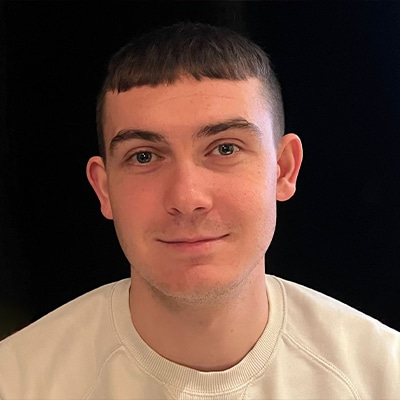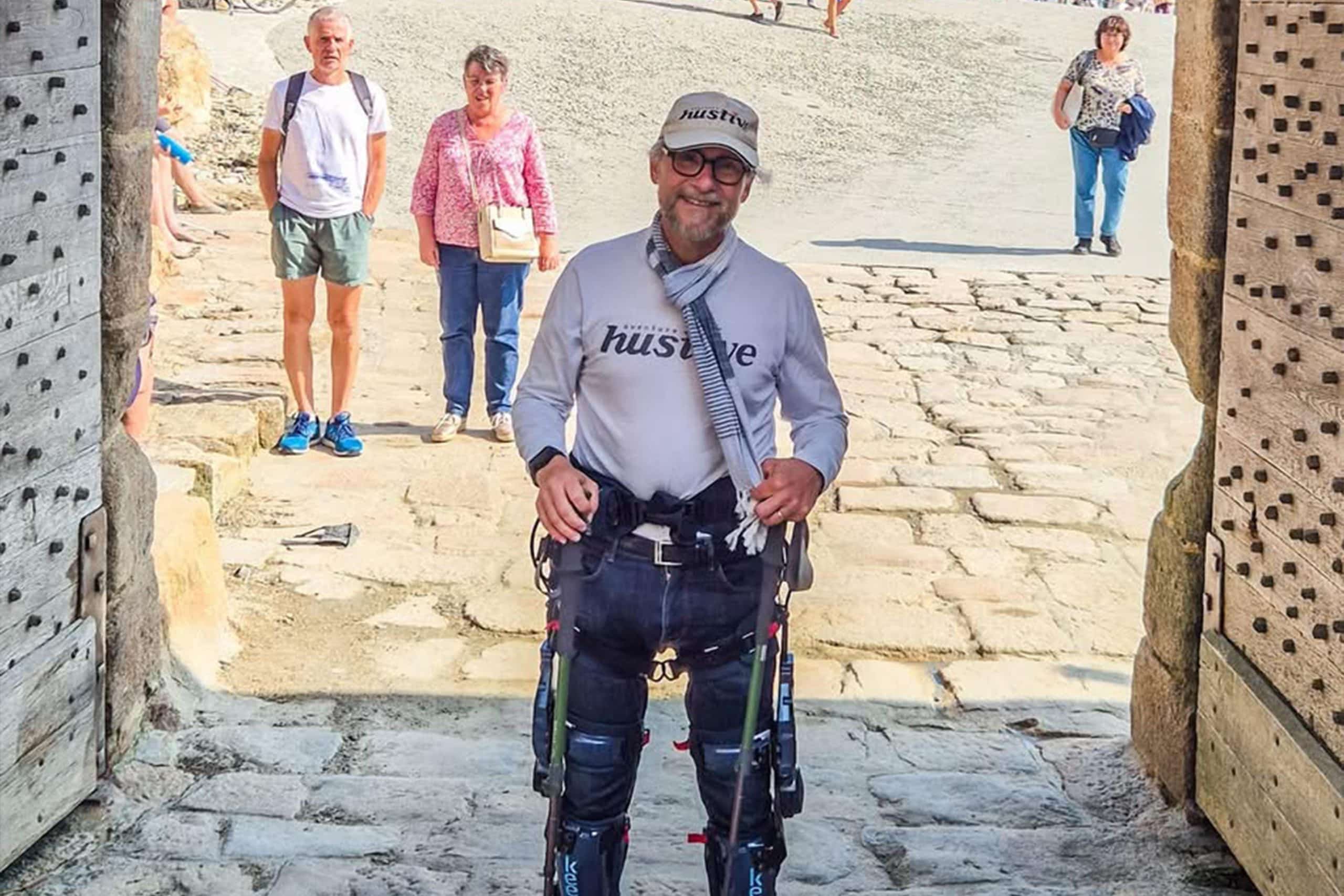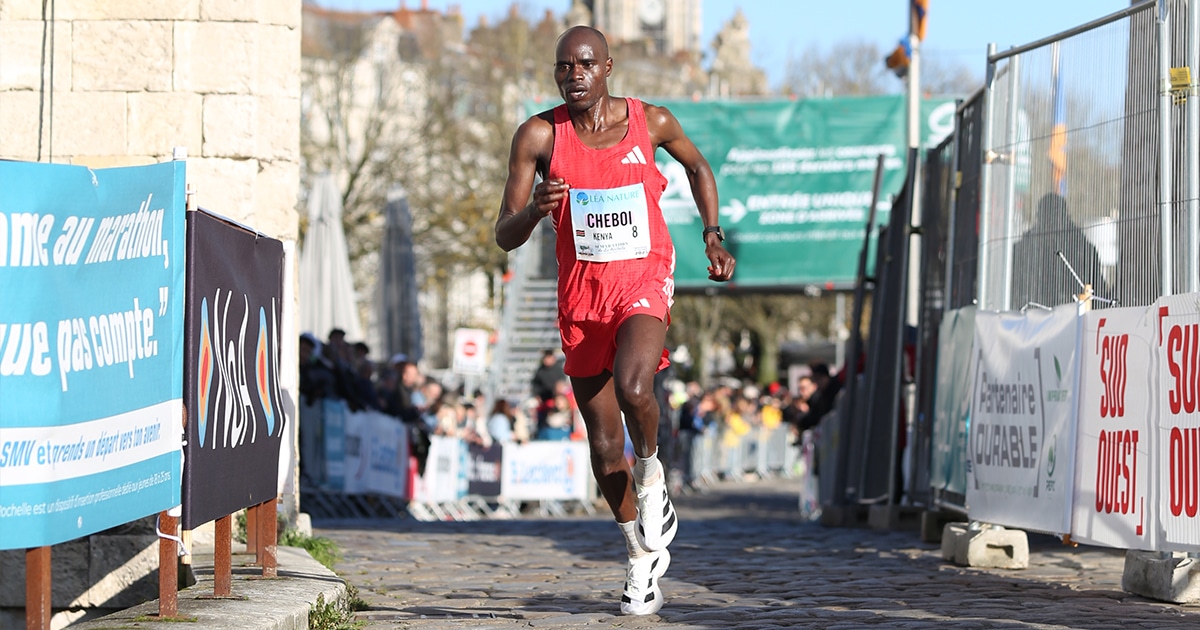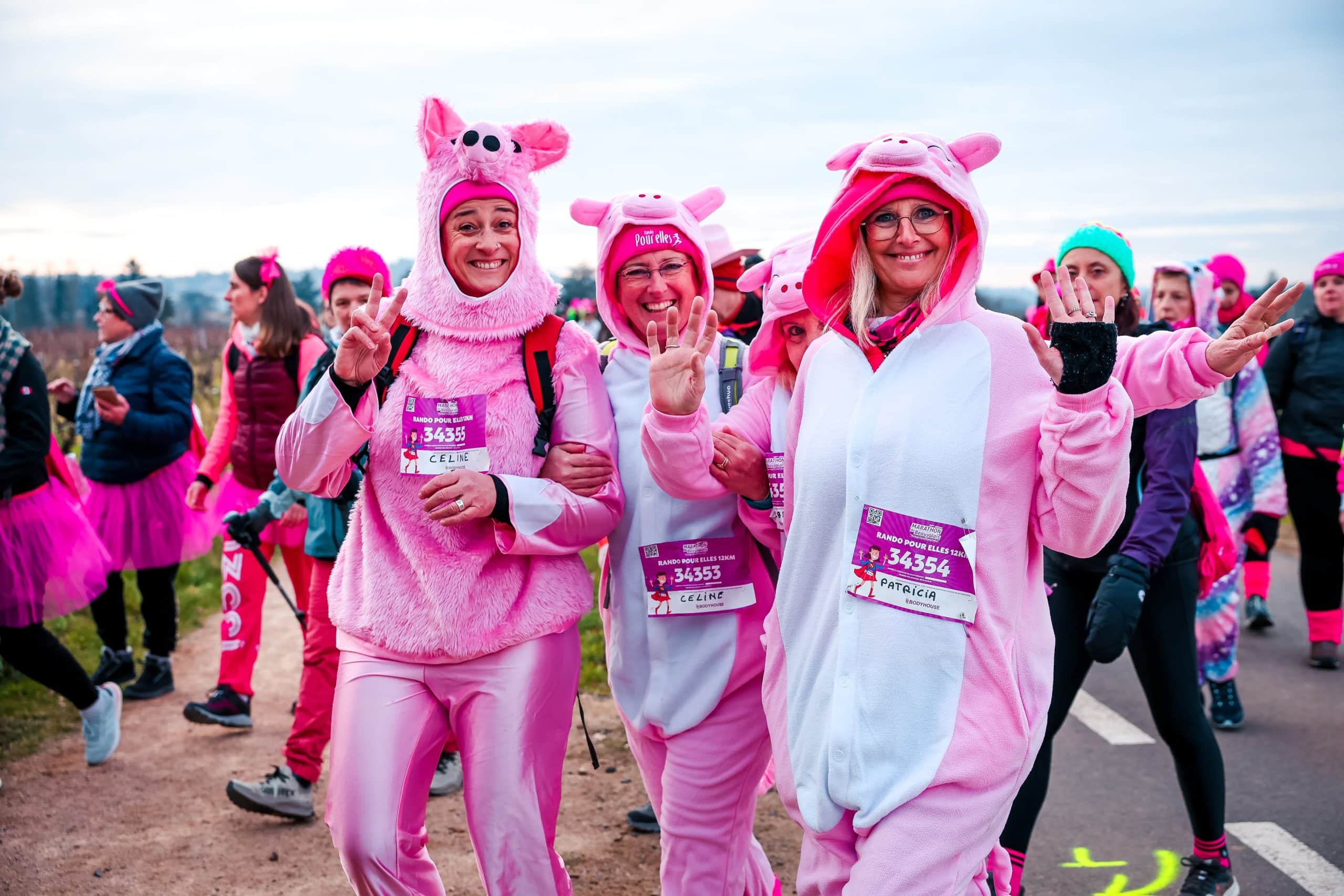Géraud Paillot, Marathoner in an Exoskeleton: « The Clock Shouldn’t Decide Who’s Invited to the Party »
He doesn’t see himself as a champion, but as a passionate athlete. Géraud Paillot has learned to live with his disability without ever giving up on sport. Using an exoskeleton, he has already completed several marathons. His motto? Show that limits aren’t meant to confine, they’re meant to be pushed.
Before he even speaks, you notice the moment: Géraud Paillot, determined figure, moving forward. The line between effort and poetry blurs. Wearing an exoskeleton called Kyogo (short for “Keep On Going”), he isn’t just “walking”—he’s redefining what’s possible, step by step. Diagnosed with multiple sclerosis in 2004, the 55-year-old Breton recently completed the Mont-Saint-Michel Solidarity Marathon with his exoskeleton. Nine hours later, he crossed the finish line with pride. MS attacks the nervous system, often making walking, coordination, and vision more difficult. While it is not curable, treatments allow a better quality of life. Founder of the association Aventure Hustive, Paillot combines extreme sports with advocacy, turning his challenges—kayaking Paris-Marseille, multiple Ironman races, swimming in icy waters—into messages of hope. He spoke to Marathons.com, candidly sharing his vision of sport, inclusion, and pushing one’s limits.
| What inspired you to run with an exoskeleton?
Every challenge I take on, people tell me: “It’s impossible.” But that doesn’t slow me down. On the contrary, it pushes me to find solutions, test my limits, and show that technology can expand what’s possible. For me, it’s not just a tool—it’s a way to push myself and send a message about inclusion in sport.
| Mental preparation seems central to your races. Why?
Without mental preparation, I couldn’t finish a marathon in an exoskeleton. Each kilometer requires endurance, but above all, incredible mental management. You have to trust yourself, anticipate difficulties, and stay focused on your sensations, your body, and your breathing. It’s a daily practice that goes beyond sport.
« Technology becomes a lever for inclusion, not just a medical tool. »
Géraud Paillot
| How has the exoskeleton changed your perception of sport and daily life?
It gives back freedoms we often take for granted. Walking, running, standing alongside others, sharing moments—these all become precious. In sport, it allows participation, collective experience, and being active. In life, it brings confidence and autonomy. Technology becomes a lever for inclusion, not just a medical device.
| You mention “handiwashing” and ticking boxes. Can you explain?
Handiwashing is when inclusion is just for show. Organizers put a few disabled athletes on the sidelines for publicity, without real integration. True inclusion means running on the same course, sharing the effort, being seen as a full participant, not just a symbol.
| What obstacles have you faced with race organizers?
Many refuse out of fear or lack of imagination. I’ve been offered separate races for “disabled athletes,” when my goal was to run with everyone. Too often, organizers make minimal concessions without thinking collectively. The real question should be: how can all participants be included on the same course?
| How should an inclusive marathon be designed from the start?
You need to plan the course and support systems with various disabilities in mind, without going to extremes to make everything accessible. For example, exoskeletons, wheelchairs, or visually impaired runners should be able to participate safely while enjoying the race. Inclusion isn’t about creating a separate category—it’s about being part of the whole.
« Technology will continue to open new horizons, allowing people to run in the mountains and tackle trails, safely and together. »
Géraud Paillot
| Which technological innovations could transform inclusion in sport?
Exoskeletons, joëlettes, guidance tools for the visually impaired… These enable people to share courses that would normally be inaccessible. Technology will continue to open horizons, allowing mountain running, trails, and adventure—all safely and collectively. It breaks down both physical and mental barriers.
| What do you think about time limits imposed by many marathons?
They exclude participants who could finish at a slower pace. I dream of a marathon where everyone has 8 or 9 hours to finish, where crossing the line is a celebration for all. Inclusion also means respecting different paces. The clock shouldn’t decide who’s invited to the party.
| How do you use multisensory imagery in your preparation?
I engage all five senses—visual, auditory, kinesthetic, olfactory, gustatory—to refine my stride and body awareness. For instance, I can reduce foot contact time to protect my knees without relying solely on sight. It’s a technique that develops unexpected mental and physical resources.
| How does mental preparation differ between able-bodied athletes and those with disabilities?
It’s essential for everyone. But athletes with disabilities often develop creativity and resourcefulness to overcome constraints. They learn to challenge themselves, anticipate problems, and manage the unexpected. This builds a strong, adaptable mindset—a real asset in competition and life.
| How does sport influence your surroundings and daily life?
Support networks are crucial—they need outlets, exercise, and mental refreshment. For me, running is simple and universal: a pair of sneakers is enough. Even 30 minutes each morning improves mental balance and physical preparation. Sport fosters family and social cohesion.
« True inclusion can’t happen if each federation stays siloed. »
Géraud Paillot
| What message do you have for clubs and federations?
Stop siloing. One federation, universal licenses, clear classifications. Inclusion starts by simplifying administrative rules, giving athletes choices, and recognizing their skills, regardless of disability or pace.
| What about diversity and gender identity in inclusive sport?
It must be fully considered. Inclusivity isn’t just about disability. LGBT, non-binary, and transgender athletes should choose their category, ranking, and pace. It’s about respect, equality, and recognition. Every participant deserves to be seen and heard.
| If you could organize the ideal marathon, what would it look like?
Accessible to as many disabilities as possible, open to all paces, with flexible time limits. Participants could run “classically” or with exoskeletons, wheelchairs, or joëlettes. Rankings would be flexible, but the celebration would be collective. The goal: include everyone on the same course in a shared experience.
| What is your final takeaway?
Inclusion is possible. Technology opens previously closed paths. But above all, the key is collective participation: able-bodied and disabled athletes, each with strengths and limits, together on the same course. Sport becomes a vector of respect, achievement, and cohesion. If I can show it’s possible to go further, anyone can dream and take part.

Dorian VUILLET
Journalist



